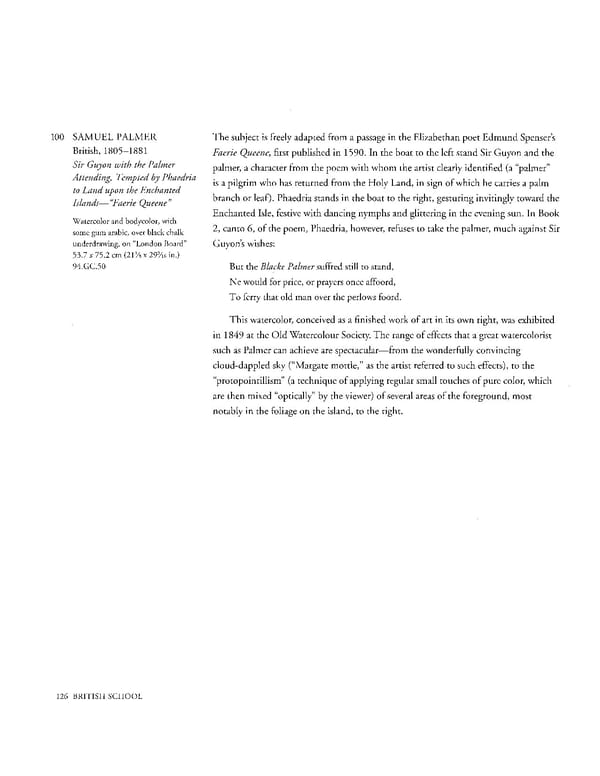100 SAMUEL PALMER The subject is freely adapted from a passage in the Elizabethan poet Edmund Spenser's British, 18051881 Faerie Queene, first published in 1590. In the boat to the left stand Sir Guyon and the Sir Guyon with the Palmer palmer, a character from the poem with whom the artist clearly identified (a "palmer" Attending, Tempted by Phaedria is a pilgrim who has returned from the Holy Land, in sign of which he carries a palm to Land upon the Enchanted Islands—"Faerie Queene" branch or leaf). Phaedria stands in the boat to the right, gesturing invitingly toward the Enchanted Isle, festive with dancing nymphs and glittering in the evening sun. In Book Watercolor and bodycolor, with some gum arabic, over black chalk 2, canto 6, of the poem, Phaedria, however, refuses to take the palmer, much against Sir underdrawing, on "London Board" Guyon's wishes: 53.7 x 75.2 cm (21 x 29 9/16 in.) 94.GC.50 But the Blacke Palmer suffred still to stand, Ne would for price, or prayers once affoord, To ferry that old man over the perlows foord. This watercolor, conceived as a finished work of art in its own right, was exhibited in 1849 at the Old Watercolour Society. The range of effects that a great watercolorist such as Palmer can achieve are spectacular—from the wonderfully convincing clouddappled sky ("Margate mottle," as the artist referred to such effects), to the "protopointillism" (a technique of applying regular small touches of pure color, which are then mixed "optically" by the viewer) of several areas of the foreground, most notably in the foliage on the island, to the right. 126 BRITISH SCHOOL
 Masterpieces of the Getty Museum: Drawings Page 126 Page 128
Masterpieces of the Getty Museum: Drawings Page 126 Page 128